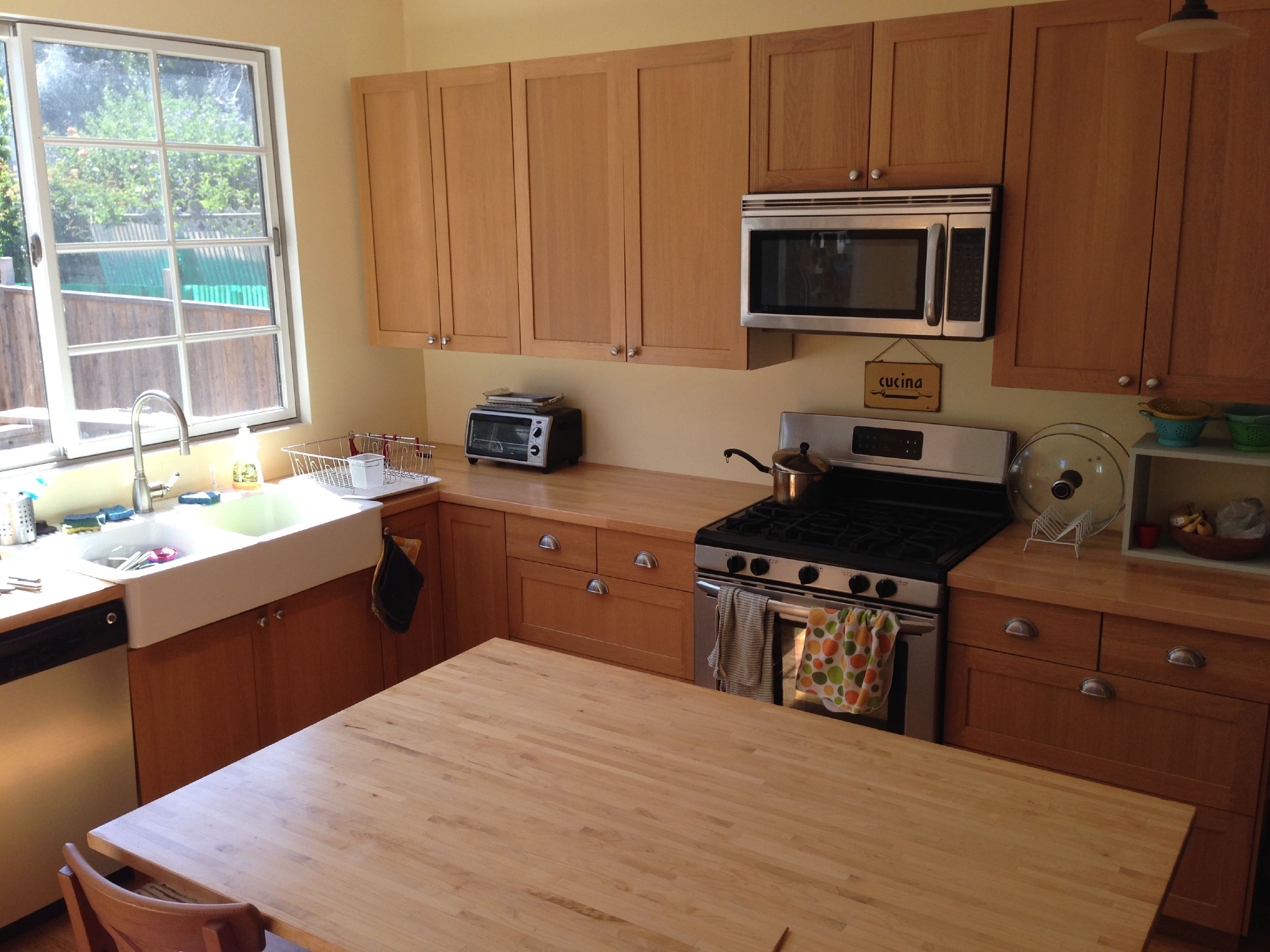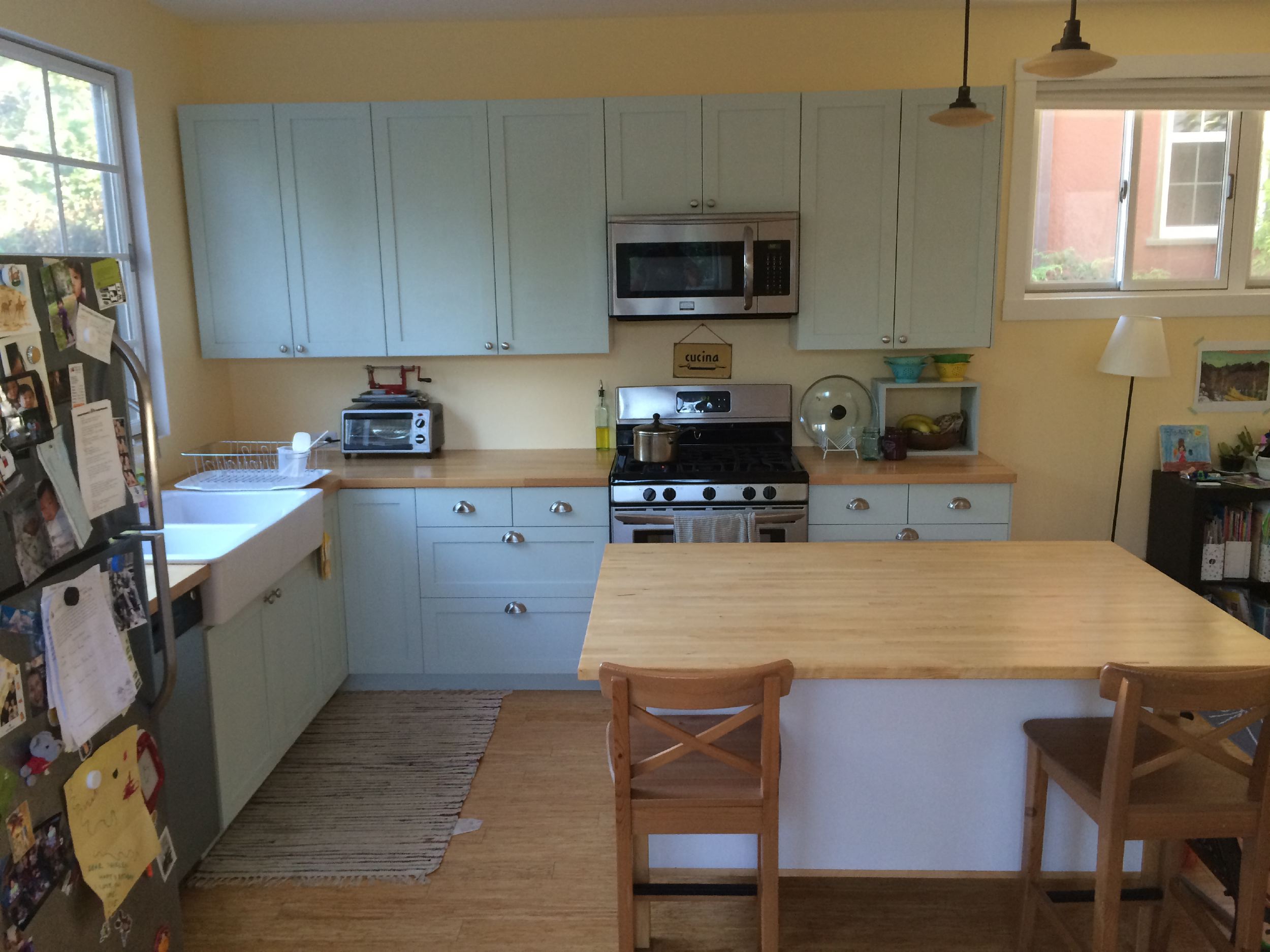Painting IKEA Kitchen Cabinets

IKEA kitchens are a popular choice for homeowners due to their affordability and stylish designs. However, sometimes you may want to personalize your kitchen further by adding a touch of your own style. Painting IKEA cabinets is a cost-effective and creative way to achieve this.
Painting IKEA cabinets offers numerous benefits. It’s significantly more affordable than replacing them entirely, allowing you to refresh your kitchen without breaking the bank. The flexibility in paint colors opens up a world of possibilities to match your existing décor or create a completely new look. It allows you to personalize your kitchen to perfectly reflect your taste and preferences.
Preparing IKEA Cabinets for Painting
Proper preparation is crucial for a successful paint job. It ensures the paint adheres well and lasts for years to come. The process involves several steps:
- Removing Cabinet Doors and Hardware: Start by removing all cabinet doors and hardware. This provides easier access to all surfaces and prevents paint from getting on unwanted areas.
- Sanding: Sanding the cabinet surfaces helps create a smooth and even surface for the paint to adhere to. Use fine-grit sandpaper to lightly sand the existing finish, removing any imperfections or gloss. This process helps the paint bond properly.
- Cleaning: After sanding, thoroughly clean the cabinets to remove dust, debris, and any remaining sanding residue. Use a damp cloth with a mild detergent to wipe down all surfaces. Ensure they are completely dry before proceeding.
- Priming: Priming is an essential step that helps the paint adhere better to the cabinet surfaces. Choose a primer specifically designed for cabinets and apply it evenly to all surfaces. Allow the primer to dry completely before proceeding to the next step.
Types of Paint for IKEA Cabinets
Several types of paint are suitable for IKEA cabinets, each with its own pros and cons. Choosing the right type depends on your specific needs and preferences:
- Latex Paint: Latex paint is a popular choice for kitchen cabinets due to its durability, ease of application, and low odor. It dries quickly and cleans up easily with soap and water. However, latex paint may not be as resistant to scratches and stains as other options.
- Acrylic Paint: Acrylic paint is similar to latex paint but often offers a smoother finish. It’s also water-based and easy to clean up. Acrylic paint is generally more durable than latex paint and can be a good option for high-traffic areas.
- Epoxy Paint: Epoxy paint is a highly durable and moisture-resistant option that is often used for kitchen cabinets. It’s a two-part paint that requires mixing before application. Epoxy paint is known for its tough and scratch-resistant finish. However, it can be more challenging to apply than latex or acrylic paint.
Essential Tools and Materials

Transforming your IKEA cabinets from plain to polished requires the right tools and materials. This section Artikels the essential items you’ll need to ensure a successful paint job.
Paint and Primer, Painting ikea kitchen cabinets
Choosing the right paint and primer is crucial for a long-lasting and aesthetically pleasing finish.
- Primer: A good primer creates a smooth, even surface for the paint to adhere to, especially important for IKEA cabinets, which can have a melamine finish.
- Zinsser Bulls Eye 1-2-3 Primer: A popular choice for its ability to adhere to various surfaces, including melamine, and its excellent sealing properties. It can be used on both bare wood and previously painted surfaces.
- Kilz 2 Primer: Another reliable option known for its ability to cover stains and prevent them from bleeding through the paint.
- Paint: The paint you choose will determine the final look of your cabinets.
- Acrylic Latex Paint: A versatile and durable choice for kitchen cabinets. It dries quickly, cleans up easily with soap and water, and comes in a wide range of colors.
- Benjamin Moore Aura: Known for its excellent coverage, durability, and low VOC content.
- Sherwin-Williams Emerald: Another high-quality option with excellent durability and a smooth finish.
- Epoxy Paint: A more durable option that can withstand high temperatures and moisture, making it suitable for high-traffic areas like kitchens.
- Rust-Oleum Epoxy Shield: A two-part epoxy paint that provides a hard, durable finish.
- Acrylic Latex Paint: A versatile and durable choice for kitchen cabinets. It dries quickly, cleans up easily with soap and water, and comes in a wide range of colors.
Painting Equipment
Having the right painting equipment will make the process smoother and lead to a professional finish.
- Paintbrushes: Choose brushes with angled bristles for precise application and good coverage.
- Purdy XL Series Angled Sash Brush: A popular choice for its high-quality bristles and comfortable handle.
- Wooster Shortcut Angled Sash Brush: Another excellent option with a durable and ergonomic design.
- Paint Rollers: Use a high-quality roller with a nap length suitable for your project.
- Wooster Shortcut Roller: A versatile option for both walls and cabinets, available in various nap lengths.
- Sherwin-Williams ProClassic Roller: Designed for smooth, even application, available in various nap lengths.
- Roller Tray and Liner: A tray with a liner will help you manage paint efficiently and keep your workspace clean.
- Wooster Shortcut Roller Tray: A sturdy and durable option with a removable liner.
- Paint Thinner: Necessary for cleaning brushes and rollers after use.
- Mineral Spirits: A common thinner for oil-based paints.
- Water: Used for cleaning brushes and rollers used with water-based paints.
- Sandpaper: Use sandpaper to smooth out any imperfections and prepare the surface for painting.
- 120-grit Sandpaper: Used for initial sanding to remove any rough spots or imperfections.
- 220-grit Sandpaper: Used for final sanding to create a smooth surface for painting.
- Painter’s Tape: Essential for protecting areas you don’t want to paint, like countertops, walls, and hardware.
- FrogTape: Known for its ability to create clean lines and prevent paint bleed.
- Drop Cloths: Protect your floors and surrounding areas from paint spills and drips.
- Canvas Drop Cloths: A durable and affordable option.
- Plastic Drop Cloths: A waterproof option that is easy to clean.
- Safety Glasses: Protect your eyes from paint splatters and dust.
- Gloves: Protect your hands from paint and primer.
- Nitrile Gloves: A durable and chemical-resistant option.
- Respirator Mask: Protect your respiratory system from paint fumes.
Painting Techniques and Best Practices: Painting Ikea Kitchen Cabinets

Choosing the right painting technique is crucial for achieving a professional finish on your IKEA kitchen cabinets. Each technique has its own advantages and disadvantages, making it essential to select the one that best suits your skill level, time constraints, and desired outcome.
Choosing the Right Painting Technique
The three most common techniques for painting kitchen cabinets are brushwork, rolling, and spraying.
- Brushwork: This technique is ideal for detailed areas and achieving a textured, hand-painted look. Brushes offer excellent control, allowing you to reach tight corners and intricate details. However, brushstrokes can be visible, especially with lighter colors, and it can be time-consuming, especially for larger surfaces.
- Rolling: Rolling is a faster and more efficient method for painting large, flat surfaces like cabinet doors and drawer fronts. Rollers provide a smoother finish than brushes, minimizing visible brushstrokes. However, rolling can be challenging for intricate details and tight corners, requiring additional brushwork in these areas.
- Spraying: Spray painting offers the fastest and most even application, creating a smooth, professional finish. It’s particularly effective for large projects and achieving a consistent color. However, spray painting requires proper ventilation and protective gear due to the potential for overspray. Additionally, it can be challenging for beginners to control the spray pattern and avoid drips.
Applying Paint to IKEA Cabinets
Once you’ve chosen your painting technique, follow these step-by-step instructions to ensure proper coverage and even application:
- Prepare the Cabinets: Thoroughly clean the cabinets with a degreaser to remove any grease, dirt, or grime. Sand the surfaces lightly to create a smooth base for the paint.
- Prime the Cabinets: Applying a primer is crucial for creating a smooth, even surface for the paint to adhere to. It also helps to seal the wood and prevent the paint from absorbing into the surface, resulting in a more durable finish.
- Apply the First Coat of Paint: Use thin, even coats of paint, allowing each coat to dry completely before applying the next. For brushwork, use long, smooth strokes, avoiding any back and forth motion that can create brushstrokes. For rolling, apply the paint in a “W” pattern, ensuring even coverage. For spraying, use a light, even coat, holding the sprayer at a consistent distance from the surface.
- Sand Between Coats: Lightly sand the surface between coats to create a smooth, even finish.
- Apply Additional Coats: Depending on the paint type and desired coverage, you may need to apply two to three coats of paint.
Tips and Tricks for a Professional Finish
- Avoid Brushstrokes: For brushwork, use long, smooth strokes, blending each stroke into the previous one. Avoid back and forth motion, which can create visible brushstrokes.
- Minimize Drips: Load your brush or roller with a small amount of paint to prevent drips. If drips occur, clean them up immediately with a damp cloth.
- Create Smooth Transitions: When painting multiple surfaces, ensure smooth transitions between them. Use a brush or roller to blend the paint at the edges.
- Use Painter’s Tape: Protect surrounding areas from paint by using painter’s tape to mask off edges and trim.
Handling Different Paint Types
- Water-Based Paints: Water-based paints are easy to clean up with soap and water, and they dry quickly. They are also low in VOCs, making them a more environmentally friendly choice. However, water-based paints may require multiple coats to achieve full coverage.
- Oil-Based Paints: Oil-based paints provide a durable, long-lasting finish, offering better resistance to moisture and stains. They also offer a smoother, more even finish. However, oil-based paints are more difficult to clean up, requiring mineral spirits or paint thinner. They also emit strong fumes, requiring proper ventilation.
Painting IKEA kitchen cabinets is like trying to tame a wild beast – it’s a project that’s more fun in theory than in practice. But if you’re looking for a more elegant touch, consider adding a chesterfield 1 door floor cabinet to your kitchen.
It’ll make your IKEA cabinets look like they were designed by a high-end interior decorator (even if you just used a roller and a can of paint).
Painting IKEA kitchen cabinets is a popular way to customize your space, but let’s be real, sometimes those flat-pack nightmares can make you want to throw paint thinner at the wall. If you’re looking for a more manageable project, consider a hemnes cabinet with 2 doors white stain for your bathroom or bedroom.
It’s a beautiful and functional piece that’s easy to assemble and paint, so you can get that fresh look without the existential dread of assembling a 100-piece kitchen cabinet.
